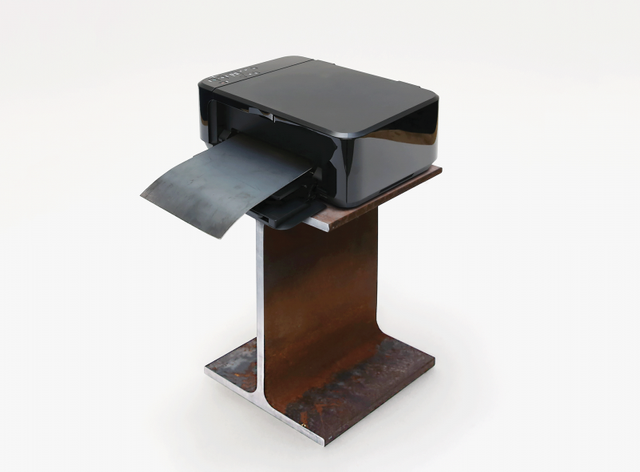
DEREK BRAHNEY
hile 3-D printing has been around for decades, it has remained largely in the domain of hobbyists and designers producing one-off prototypes. And printing objects with anything other than plastics—in particular, metal—has been expensive and painfully slow.
Now, however, it’s becoming cheap and easy enough to be a potentially practical way of manufacturing parts. If widely adopted, it could change the way we mass-produce many products.
3-D Metal Printing Best Technology
BreakthroughNow printers can make metal objects quickly and cheaply.Why It MattersThe ability to make large and complex metal objects on demand could transform manufacturing.Key PlayersMarkforged, Desktop Metal, GEAvailabilityNow
In the short term, manufacturers wouldn’t need to maintain large inventories—they could simply print an object, such as a replacement part for an aging car, whenever someone needs it.
In the longer term, large factories that mass-produce a limited range of parts might be replaced by smaller ones that make a wider variety, adapting to customers’ changing needs.
The technology can create lighter, stronger parts, and complex shapes that aren’t possible with conventional metal fabrication methods. It can also provide more precise control of the microstructure of metals. In 2018, researchers from the Lawrence Livermore National Laboratory announced they had developed a 3-D-printing method for creating stainless-steel parts twice as strong as traditionally made ones.
Also in 2018, 3-D-printing company Markforged, a small startup based outside Boston, released the first 3-D metal printer for under $100,000.
Another Boston-area startup, Desktop Metal, began to ship its first metal prototyping machines in December 2017. It plans to begin selling larger machines, designed for manufacturing, that are 100 times faster than older metal printing methods.
The printing of metal parts is also getting easier. Desktop Metal now offers software that generates designs ready for 3-D printing. Users tell the program the specs of the object they want to print, and the software produces a computer model suitable for printing.
GE, which has long been a proponent of using 3-D printing in its aviation products (see “10 Breakthrough Technologies of 2013: Additive Manufacturing”), has a test version of its new metal printer that is fast enough to make large parts. The company plans to begin selling the printer in 2018. —Erin Winick
Source
The image you posted without attribution or a source is the primary source of value for your post.
Plagiarism is the copying & pasting of others work (including images, art, and graphics) without giving credit to the original author or artist.
Repeated plagiarism is considered spam. Spam is discouraged by the community and may result in action from the cheetah bot.
More information on Image Plagiarism
If you believe this comment is in error, please contact us in #disputes on Discord
Downvoting a post can decrease pending rewards and make it less visible. Common reasons:
Submit
Hi! I am a robot. I just upvoted you! I found similar content that readers might be interested in:
https://www.technologyreview.com/lists/technologies/2018/
Downvoting a post can decrease pending rewards and make it less visible. Common reasons:
Submit
tThanks For Comment
Downvoting a post can decrease pending rewards and make it less visible. Common reasons:
Submit
Hey @riyad24, gotta love Steemit! Still awesome platform and community and it's nice having great people contribute so we all benefit. Keep up the good work! Cheers!
Downvoting a post can decrease pending rewards and make it less visible. Common reasons:
Submit
Thanks for comment
Downvoting a post can decrease pending rewards and make it less visible. Common reasons:
Submit
This post has received a 100.00 % upvote from @voterunner thanks to: @riyad24. BIG NEWS: Build your passive income with daily payouts from @voterunner! Read more about earning SBD with me. Daily. The easy way!
Downvoting a post can decrease pending rewards and make it less visible. Common reasons:
Submit
thanks
Downvoting a post can decrease pending rewards and make it less visible. Common reasons:
Submit